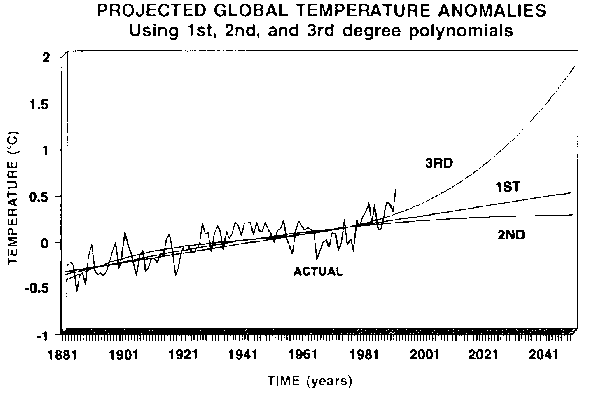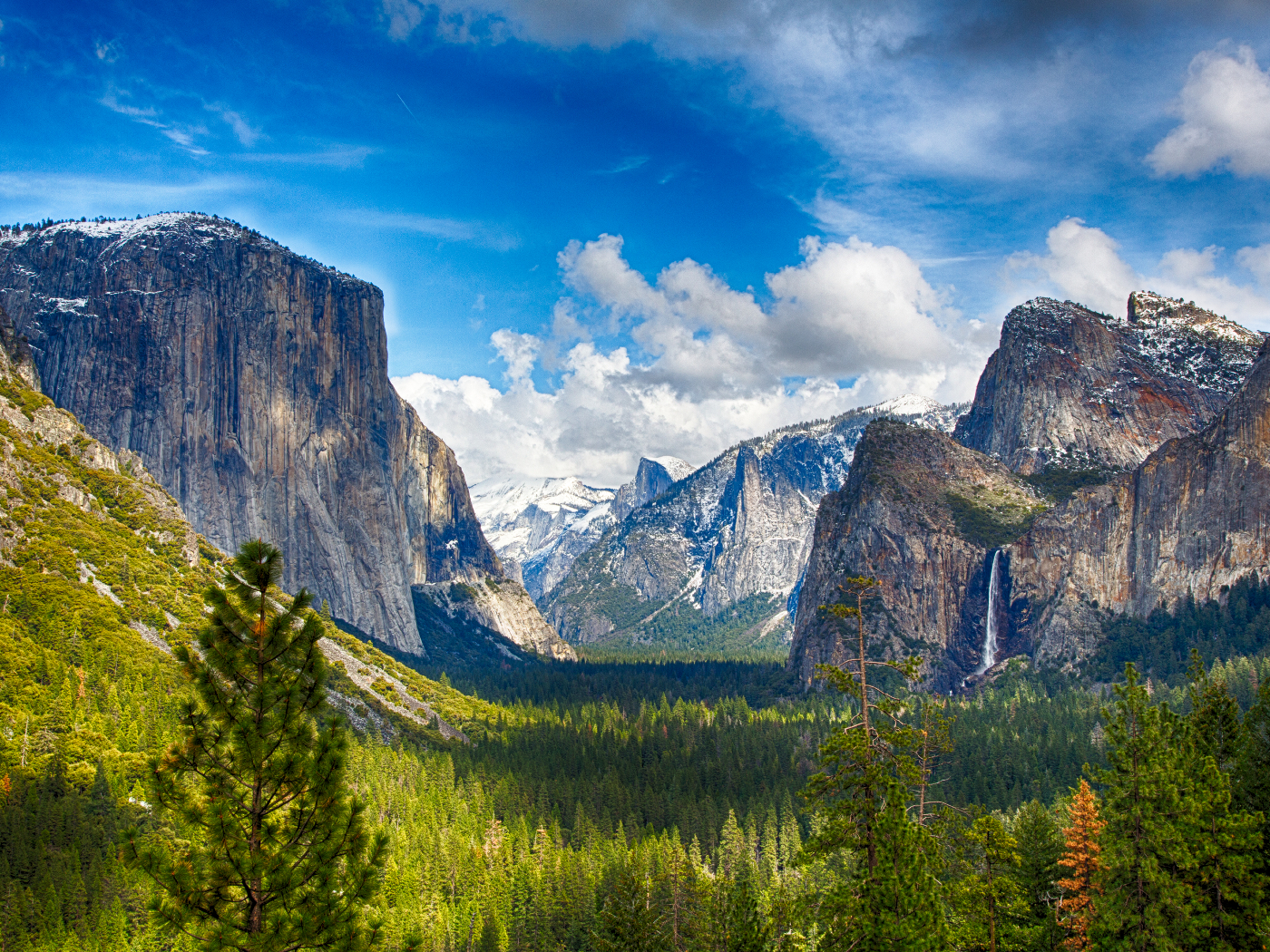Introduction
During the late 1980s and 1990s, the alleged "Greenhouse Effect" captured the interest of news magazines, radio, and television programs. Predictions from various scientists range from a coming cataclysmic, worldwide impact to little or no impact at all. However, those scientists on the apocalyptic side seem to have captured the greatest interest from the media as well as policy makers from state governments and international organizations, such as the World Bank. Foreboding scenarios are conjured, including world food shortages, melting polar ice caps accompanied by severe flooding of coastal land masses, destruction of ecosystems, and greatly increased severity of storm activity (hurricanes, etc.). Most of the greenhouse effect is attributed to the burning of fossil fuels which releases tremendous amounts of carbon dioxide and other gases into the atmosphere, trapping heat and warming the planet.[1]
Because of the many ominous predictions for the climate, policy makers from both national governments and international organizations are demanding policy adoptions in the form of carbon taxes, mandated efficiency measures, and subsidies for non-carbon dioxide-emitting technologies to roll back greenhouse gas emissions to their 1990 levels.[2] While there is disagreement among climatologists regarding the significance of the "greenhouse" effect, there seems to be more agreement among other investigators that "cutting back" significantly on greenhouse gas emissions would have more serious negative worldwide impacts, with large Gross Domestic Product reductions, resulting in lower living standards in the long run.[3] Looking back to the recent past, it is now all but forgotten that some outspoken climatologists in the late 1970s predicted a completely opposite scenario, a return to an ice age with cataclysmic impacts, which also demanded immediate attention.
The Use of Climate Models
To measure historical as well as future impacts of carbon dioxide emissions on climate variables, scientists have developed mathematical climate models, whose features are discussed in a recent book by Robert Balling.[4] He points out that many of these climate models predict substantial increases in global temperature for increases in carbon dioxide levels, and it is these predictions that have attracted the attention of policy makers and the media.[5] For example, a doubling of carbon dioxide levels results in an increase in global temperatures in eight climate models mentioned by Balling.[6] Based on these models, global average temperature increases from a low of 1.9 to a high of 4.8 degrees centigrade. What is generally not appreciated is that the models also unanimously predict increases in precipitation as well as increases in temperature, and these levels range from 3 to 15 percent.[7]
What is also usually neglected in the popular press is that the climate models have significant limitations on the simulation of the ocean-atmosphere interaction, which is not yet well understood. Balling says, "Until we have better knowledge of the coupling between oceans and the atmosphere, the model predictions must be treated with considerable caution."[8] Another very significant difference among the models is their cloud-climate responses.
The Historical Temperature Record and Future Implications
In Figure 1, we show global average temperature anomalies for the period 1881 to 1990.[9] If we fit a linear trend line through the data, we find that global average temperature has increased by .56 degrees centigrade. However, over this same period, equivalent carbon dioxide levels have increased by about 40 percent. Assuming that there is a relationship between carbon dioxide levels and temperature change, this would imply an increase in temperature of about 1.4 degrees for a doubling of carbon dioxide levels, which is below the temperature range predicted by the climate models reported by Balling.
However, it often can be misleading to fit a linear trend line through historical data and draw firm conclusions from it. Referring to Figure 1 again, we have fit two additional trend lines through the historical temperature data—a quadratic and a cubic trend. Using these three trend equations, we have extrapolated temperature anomalies from 1991 to 2050, and we observe a wide range of temperature difference, depending upon which historical trend is used. Thus, historical data may not determine a unique trend and can be highly misleading in predicting future temperature changes.

Figure 1.
The interpretation of the temperature data in relation to carbon dioxide levels gets even more difficult when the global average temperature is separated into northern and southern hemisphere temperature anomalies. For example, if the period in which most of the temperature increases occurred is examined (1881 to 1940), we find that the northern and southern temperature series are not related to each other in a stable manner.[10] In contrast, we do find a stable relationship between the northern and southern hemisphere temperatures for the period 1941 to 1990. Thus, different factors may have been at work.
Stabilizing Factors at Work
Dr. Sherwood B. Idso, a research physicist with U.S. Water Conservation Laboratory, Phoenix, Arizona, has found that the "greenhouse effect" could in fact turn out to be beneficial rather than harmful to the planet.[11] In his experiments, Dr. Idso has found that plants, when enriched with more carbon dioxide, "grow bigger and better, much like the plants of past geological epochs of biological prominence." Furthermore, "the efficiency with which plants use water to produce organic matter, essentially doubles with a doubling of the atmospheric carbon dioxide concentration. Moreover, for a tripling of the amount of carbon dioxide in the air, it nearly triples!"[12] According to Dr. Idso, because plants use water more efficiently with higher carbon dioxide concentrations, they will grow in places where they have not been able to grow in the past. Below ground, the soil will become more enriched, which will increase microbiological activity, such as increasing the supply of earthworms. Dr. Idso also has found that some plants increased net photosynthesis rates of exposed leaves by approximately 50 percent. In an experiment with orange trees exposed to increased carbon dioxide levels, he found after a 30-month period that the enhanced carbon dioxide-exposed trees were more than twice as large as the trees exposed to ambient air. Dr. Idso concludes, "It well could be that the rising carbon dioxide content of Earth's atmosphere is actually a blessing in disguise and one of the better things that could happen to mankind and nature."[13]
Global Warming and the Pre-Flood Era
Although the results of Dr. Idso's research need to be studied further, it is intriguing to speculate about the implications of plants growing larger and becoming more environmentally efficient as carbon dioxide levels increase. Could it be that during the pre-flood time, not only was there a water-vapor canopy and a tropical environment, there also were significantly increased carbon dioxide levels than what is contained in the earth's atmosphere today?[14] If this were the case, then there might have been much greater vegetation than we have today. With increased vegetation, there would have been a great need for large plant-eating animals such as dinosaurs to control vegetation levels. In addition, the large vegetation levels could have provided more than adequate material for the production of great quantities of fossil fuels during Noah's Flood.
Conclusions
It seems that today's environmental policy-makers could learn a great lesson from pre-Flood history as depicted in the Bible. If carbon dioxide levels were much higher during the pre-Flood era, then this implies that there are built-in global stabilizing factors provided by our Creator that can accommodate changes in carbon dioxide levels from the burning of fossil fuels and other man-made greenhouse emission activities. Once again, reference to God's Word can give tremendous insight into solving today's scientific problems.
References
- This topic also was discussed in an earlier "Impact" article. See Larry Vardiman, "The Christian and the Greenhouse Effect," Impact, No. 204, ICR, June 1990.
- World Bank, 1992 World Development Report.
- Peter Hoeller, Andrew Dean, and Jon Nicolaisen, "Macroeconomic Implications of Reducing Greenhouse Gas Emissions: A Survey of Empirical Studies," OECD Economic Studies, No. 16, Spring 1991, pp. 45-78.
- Robert C. Balling, Jr., "The Heated Debate: Greenhouse Predictions Versus Climate Reality," Pacific Research Institute for Public Policy, San Francisco, California, 1992.
- Ibid., pp. 17-32.
- Ibid., p. 40.
- Ibid., Table 2, p. 41.
- Ibid., p. 44.
- All data series used in this analysis were obtained from Trends '91: A Compendium of Data on Global Change, Carbon Dioxide Information Analysis Center, Environmental Sciences Division, Oak Ridge National Laboratory.
- For a description of testing for unit roots and cointegration, see Andrew C. Harvey, Forecasting, Structural Time Series Models, and the Kalman Filter, Cambridge University Press, Cambridge CB2 1RP, England, 1991.
- Sherwood B. Idso, "Carbon Dioxide Can Revitalize the Planet," OPEC Bulletin, March 1992, pp. 22-27.
- Ibid., p. 24.
- Ibid., p. 27.
- For a discussion of the pre-Flood environment, see Henry M. Morris, The Genesis Record, Baker Book House, Grand Rapids, Michigan,1976.
Dr. Cooper is a U.S. Government Economist working on assignment overseas.



















